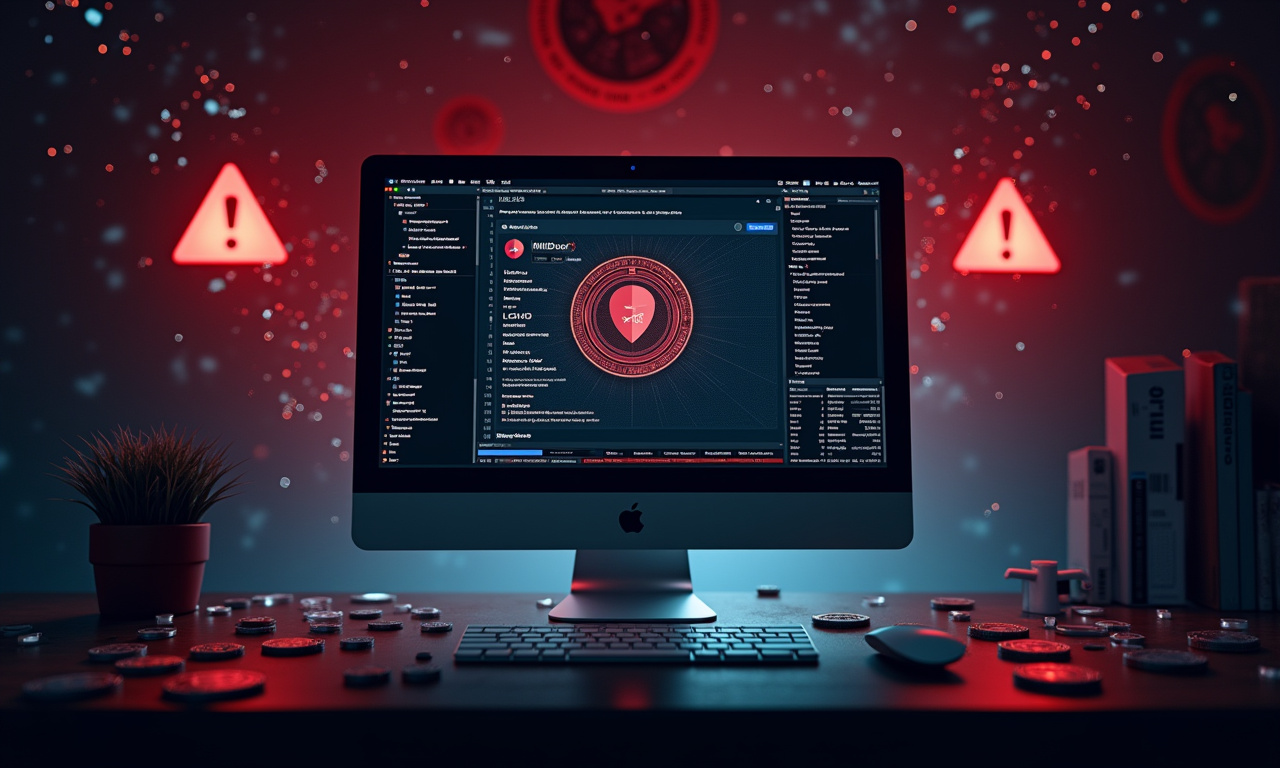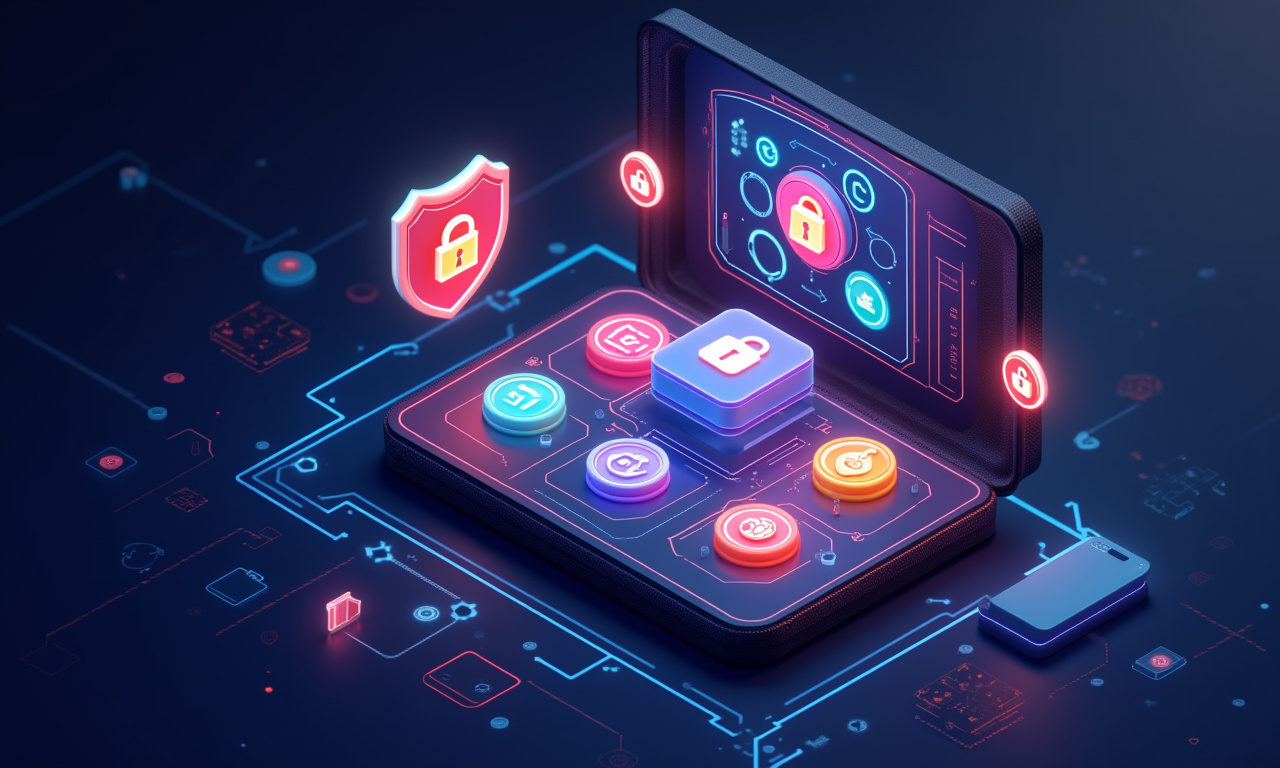
As we all know, in the fast-paced world of cybersecurity, new threats are developing every day, and even the most experienced cryptocurrency users are at risk. LeeChiaJian, a meticulous blockchain analyst with a keen eye for detail, brings to light a particularly concerning threat: the NimDoor malware, which specifically targets macOS systems to compromise crypto wallets. This article serves as a comprehensive guide to understanding, preventing, and mitigating NimDoor attacks, empowering Mac users to safeguard their digital assets.
Understanding the NimDoor Threat
NimDoor, a highly advanced strain of malware that hacks into macOS devices to steal cryptocurrency by draining crypto wallets. Yet it works in a quiet manner, wreaking havoc until major destruction has already occurred. Malware installed on target devices usually comes from phishing attempts, malicious websites, or bad downloads of software. Once installed, NimDoor can exfiltrate sensitive information including seed phrases, private keys, and login credentials. This access then allows attackers to remotely access crypto wallets without any user interaction.
LeeChiaJian cautions that NimDoor’s capability to subvert traditional security measures is what makes it especially vicious. It employs other advanced techniques such as code obfuscation and process injection to evade detection. This allows it to remain undetected in the system for extended periods. This cloaked activity allows threat actors to identify critical intelligence without being detected, so early detection and prevention is of utmost importance.
The consequences of a NimDoor attack are catastrophic. If victims are unable to recover access to their crypto wallets, this can lead to life-changing financial losses. The stolen data presents a unique threat for identity theft. Beyond that, it leaves an open door to further nefarious acts, adding salt to the proverbial wound created by the first breach. As such, learning how NimDoor works and taking strong precautions against it are critical to keeping your macOS crypto wallets safe.
Identifying Signs of a NimDoor Infection
If you detect a NimDoor infection while there’s still time to prevent serious damage, head here for help cleaning the infection. LeeChiaJian advises users to be vigilant and watch out for the following signs:
Unusual browser behavior: If the browser has been hijacked and is directing traffic to malicious third-party sites, it could be a sign of malware infection. This includes unexpected redirects, pop-up ads, or changes to the default search engine.
Spam sent from email or social media accounts: If friends report receiving spam from your email or social media accounts, it could indicate that your Mac has been infected with malware. NimDoor can use compromised accounts to spread itself to other users.
Suspicious activity and processes: Reviewing recent activity and processes on your Mac can help identify malicious applications and reveal suspicious behaviors, unauthorized access, or unusual resource usage. Use Activity Monitor to check for unfamiliar processes consuming excessive resources.
XProtect detections: macOS's XProtect checks for known malicious content and blocks it, moving it to the Trash. Users can check for XProtect detections and events in the system logs to identify potential threats.
Future-proof—keep an eye on your system and stay a step ahead of how it’s performing. Stay up to date on the newest threat intelligence to rapidly identify and remediate any NimDoor infections. What goes into a secure development process Regular security audits and frequent software updates are central to having a secure infrastructure.
Preventing NimDoor Attacks: Proactive Security Measures
LeeChiaJian recommends implementing the following proactive security measures to protect against NimDoor attacks:
Use a hardware wallet: Hardware wallets are generally immune to malware and feature robust physical defense measures, such as tamper-evident casing, secure elements, and automatic erasure protocols. Hardware wallets store private keys offline, making them inaccessible to malware.
Encrypt the seed phrase: Encrypting the seed phrase before storing it can protect against unauthorized access, even if the file is accessed by someone. Encryption adds an extra layer of security, ensuring that the seed phrase remains unreadable without the correct decryption key.
Split the seed phrase: Splitting the seed phrase into multiple parts, also known as shards, can provide additional security. This can be done using Shamir's Secret Sharing Scheme (SSSS). SSSS allows the seed phrase to be divided into multiple parts, requiring a certain number of parts to reconstruct the original seed phrase.
Store in multiple locations: Storing the seed phrase in multiple locations, such as a bank safety deposit box or a secure online storage solution, can help protect against loss or theft. Diversifying storage locations reduces the risk of losing the seed phrase due to a single point of failure.
Use a secure storage solution: Using a secure storage solution, such as a digital vault or an encrypted file storage, can help protect the seed phrase against malware attacks. Secure storage solutions offer features such as password protection, encryption, and multi-factor authentication.
LeeChiaJian highlights the value of a multi-layered security approach. Together these measures provide robust protection against NimDoor and other malware threats. This method greatly decreases the chance of you accidentally jeopardizing your crypto wallet.
Mitigating a NimDoor Infection: Remedial Steps
Once a NimDoor infection is suspected or confirmed, swift defensive steps must be taken to reduce harm. LeeChiaJian outlines the following steps:
Boot in Safe mode: Prevent malware from loading at startup by booting your Mac in Safe mode. Safe mode loads only essential system components, preventing NimDoor from running.
Run a full system scan: Use a reputable antivirus or anti-malware program to scan the system and remove any detected threats. Ensure that the antivirus software is up-to-date to detect the latest malware signatures.
Change passwords: Change passwords for all crypto wallets, exchange accounts, and other sensitive online accounts. Use strong, unique passwords for each account to prevent attackers from gaining access.
Transfer funds: Transfer funds from compromised wallets to new, secure wallets on a clean device. This prevents further losses in case the malware is still active on the infected system.
Reinstall macOS: As a last resort, consider reinstalling macOS to ensure that all traces of the malware are removed. Back up important data before reinstalling the operating system.
Taking these actions immediately can limit harm from a NimDoor infection and avert additional business loss. Contact the federal or state reporting authority right away and file a complaint. Engage with the security community to inform law enforcement efforts to track and fight the malware.
Securing Seed Phrases: Best Practices
As the master key to a crypto wallet, the seed phrase’s security is of utmost importance. LeeChiaJian provides the following best practices for securing seed phrases:
Use a hardware wallet: Hardware wallets provide a secure environment for storing seed phrases offline, protecting them from malware and online attacks.
Encrypt the seed phrase: Encrypting the seed phrase adds an extra layer of security, making it unreadable to unauthorized users.
Split the seed phrase: Splitting the seed phrase into multiple parts and storing them in different locations reduces the risk of compromise.
Store in multiple locations: Diversifying storage locations ensures that the seed phrase is not lost due to a single point of failure.
Use a secure storage solution: Secure storage solutions offer features such as password protection, encryption, and multi-factor authentication to protect the seed phrase against unauthorized access.
Whatever the root cause, by implementing these best practices you can significantly lower the risk of seed phrase compromise. This will better prepare users to prevent the theft of their crypto wallets.
Securing Browser Wallets: Essential Tips
LeeChiaJian offers the following essential tips for securing browser wallets:
Use a strong password: Use a strong, unique password for the browser wallet to prevent unauthorized access.
Enable two-factor authentication (2FA): Enable 2FA to add an extra layer of security, requiring a second verification factor in addition to the password.
Keep the browser and wallet extension up-to-date: Regularly update the browser and wallet extension to patch security vulnerabilities.
Be cautious of phishing attacks: Be wary of phishing emails and websites that attempt to steal login credentials.
Use a reputable browser wallet: Choose a reputable browser wallet with a strong security track record.
Check out these tips to make your browser wallet more secure. Follow these tips and you can better protect your organization against potential malware attacks.
Securing Exchange Accounts: Robust Measures
Exchange accounts are another easy target that can be exploited through malware. LeeChiaJian recommends implementing the following robust measures to secure exchange accounts:
Use a strong password: Use a strong, unique password for the exchange account to prevent unauthorized access.
Enable two-factor authentication (2FA): Enable 2FA to add an extra layer of security, requiring a second verification factor in addition to the password.
Use a hardware security key: Consider using a hardware security key, such as a YubiKey, for 2FA to provide the highest level of security.
Enable whitelisting: Enable whitelisting to restrict withdrawals to pre-approved addresses.
Monitor account activity: Regularly monitor account activity for suspicious transactions or login attempts.
Taking these steps will go a long way toward improving the security of your exchange account. Guard your money against hackers withdrawals, and avoid losing your assets!
Self-Custody vs. Custodial Services: Weighing the Pros and Cons
Whether to use self-custody or custodial services is an important consideration for crypto users. LeeChiaJian weighs the pros and cons of each option:
Whether someone chooses self-custody or custodial services will ultimately come down to their personal preferences and risk tolerance. While self-custody provides users with superior control and independence, it places the onus of their security squarely on them. Custodial services provide a convenient and user-friendly experience, but do come with the tradeoff of having to trust a third party with your funds.
Complete autonomy: With a self-custody wallet, there is no third party involved in the management of your private keys, giving you complete control over your funds.
Independence: No reliance on third-party providers, so you aren't affected by their issues.
Exemption from confiscation or freezing: A self-custody wallet helps investors who take proper care and meet a set of requirements improve their chances of having their crypto exempt from confiscation or being frozen by third parties.
Responsibility for security: While non-custodial wallets don’t require you to trust a third party, they require you to trust yourself to keep your keys and your wallet secure.
Risk of losing keys: You are solely responsible for not losing your keys and requires that you take your own precautions to protect your funds.
Practicing good “wallet hygiene” will go a long way towards keeping a physical wallet secure and extending its lifespan. Lee Chia Jian provides the following practical tips:
Convenience: Custodial services handle the storage and security of private keys, making it easier for users to manage their crypto assets.
Insurance: Some custodial services offer insurance coverage to protect against loss or theft of funds.
Ease of use: Custodial services typically provide user-friendly interfaces and customer support.
Trust required: Users must trust the custodial service to securely store and manage their funds.
Potential for hacks: Custodial services are potential targets for hackers, putting users' funds at risk.
By deploying these best practices, consumers can help to protect their wallets and increase their longevity.
Wallet Hygiene: Maintaining a Clean and Secure Wallet
The crypto security landscape is an ever-shifting environment where new threats are consistently introduced. LeeChiaJian reminds program operators of the need to continually educate themselves about the newest threats and security best practices.
Regular Cleaning: Regular cleaning preserves the look of your wallet and ensures its functionality for years to come.
Use a Mild Soap Solution: Mix a few drops of mild soap in warm water to clean your wallet.
Wipe the Wallet: Use circular motions to clean the wallet’s surface, focusing on areas with visible stains or dirt.
Condition the Leather: After cleaning, apply a leather conditioner to maintain the wallet’s softness and prevent cracks.
Avoid Using Too Much Water: Excessive water can damage both leather and fabric wallets.
Subscribe to our newsletter and participate in the broader security community. In this manner, you protect yourself proactively from new and existing threats to ensure a safe crypto experience.
Staying Updated on Crypto Security Threats
LeeChiaJian’s findings offer a detailed roadmap on how best to defend against the NimDoor malware and associated threats that are targeting macOS crypto wallets. Act on these key security steps to secure your digital presence. So stay smart out there, and cruise confidently through the crypto cosmos! As always, in the crypto space educate yourself, and crypto-safety comes first.
Follow security experts and researchers: Follow security experts and researchers on social media and blogs to stay informed about the latest threats and vulnerabilities.
Subscribe to security newsletters and alerts: Subscribe to security newsletters and alerts to receive timely updates on emerging threats and security patches.
Participate in security communities: Participate in security communities and forums to learn from other users and share security tips.
Attend security conferences and webinars: Attend security conferences and webinars to learn about the latest security trends and technologies.
By staying informed and engaged in the security community, users can proactively protect themselves against emerging threats and maintain a secure crypto environment.
LeeChiaJian's insights provide a comprehensive guide to defending against the NimDoor malware and other threats targeting macOS crypto wallets. By implementing the recommended security measures and staying vigilant, users can safeguard their digital assets and navigate the crypto landscape with confidence. Remember, in the world of cryptocurrency, knowledge is power, and security is paramount.

Lee Chia Jian
Blockchain Analyst
Lim Wei Jian blends collectivist-progressive values and interventionist economics with a Malaysian Chinese perspective, delivering meticulous, balanced blockchain analysis rooted in both careful planning and adaptive thinking. Passionate about crypto education and regional inclusion, he presents investigative, data-driven insights in a diplomatic tone, always seeking collaborative solutions. He’s an avid chess player and enjoys solving mechanical puzzles.








